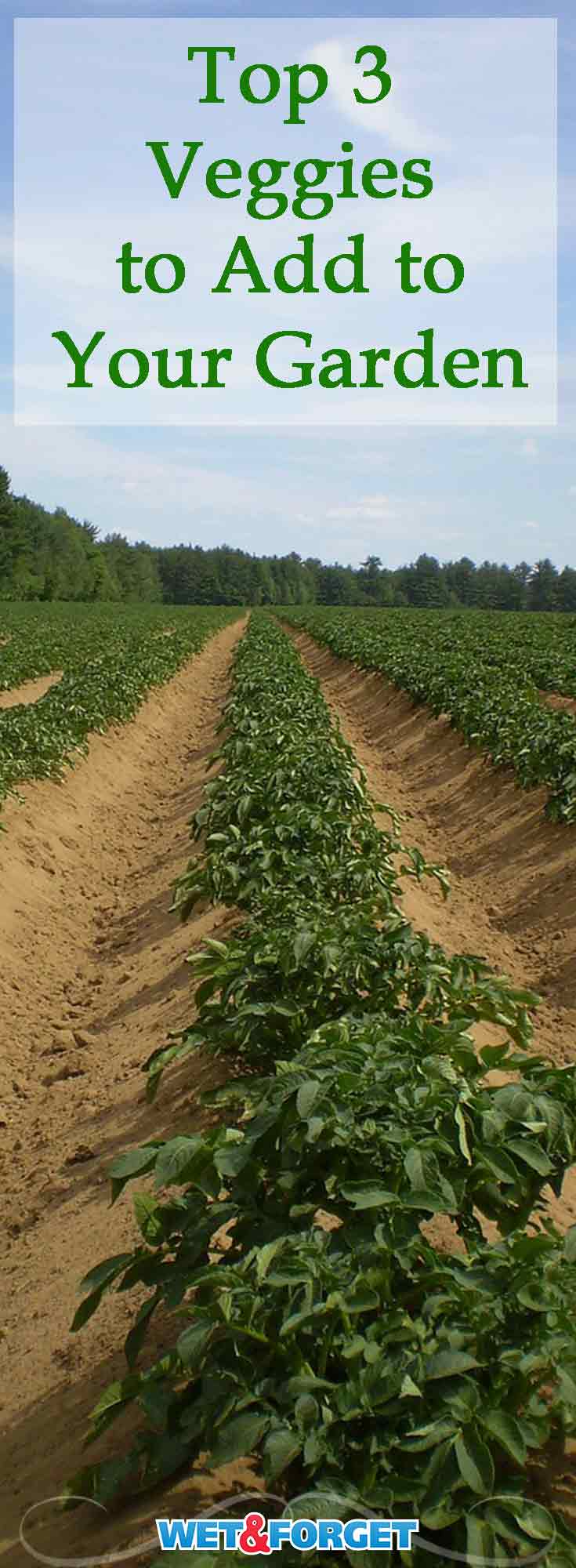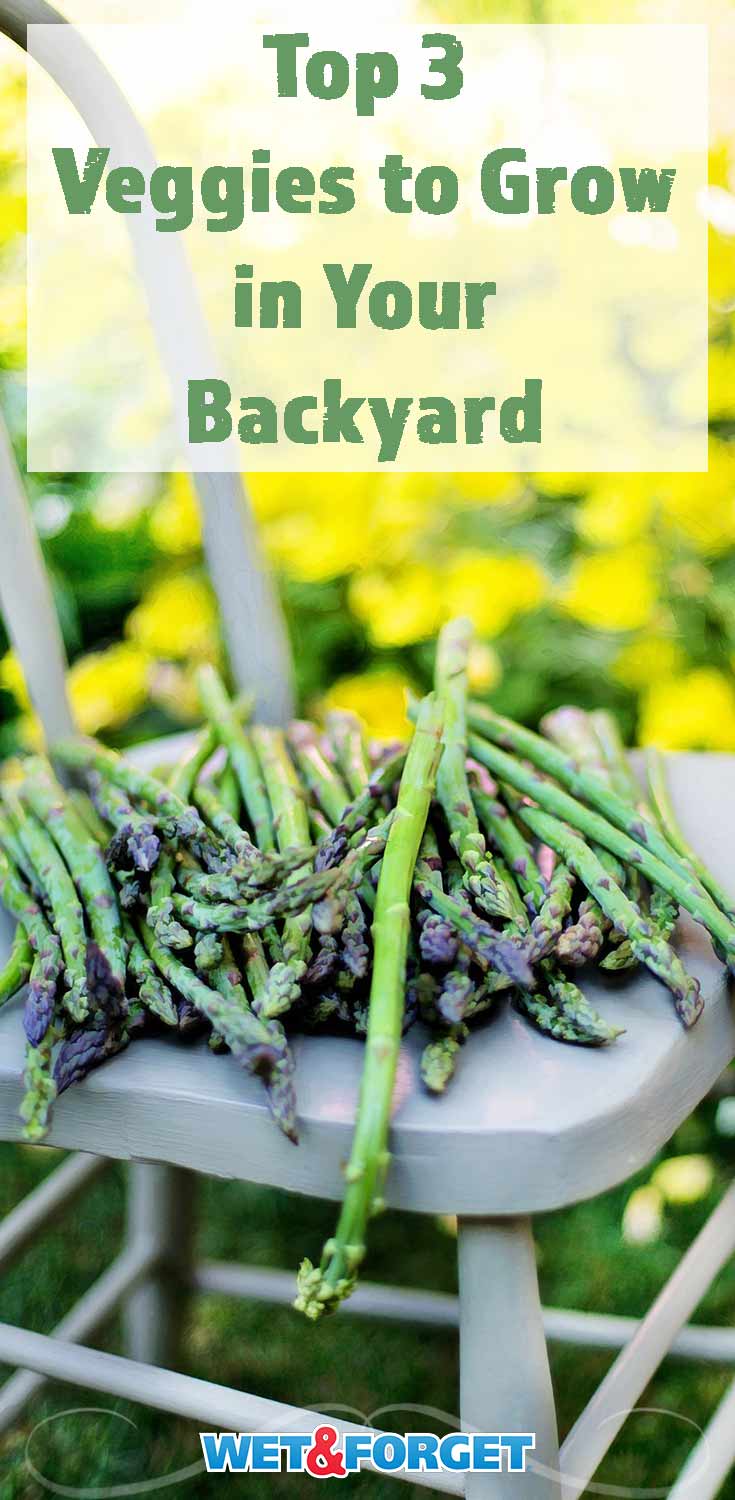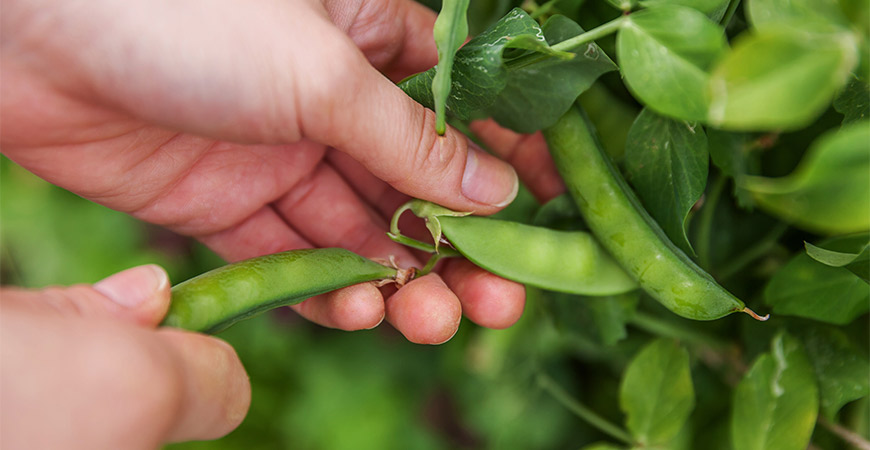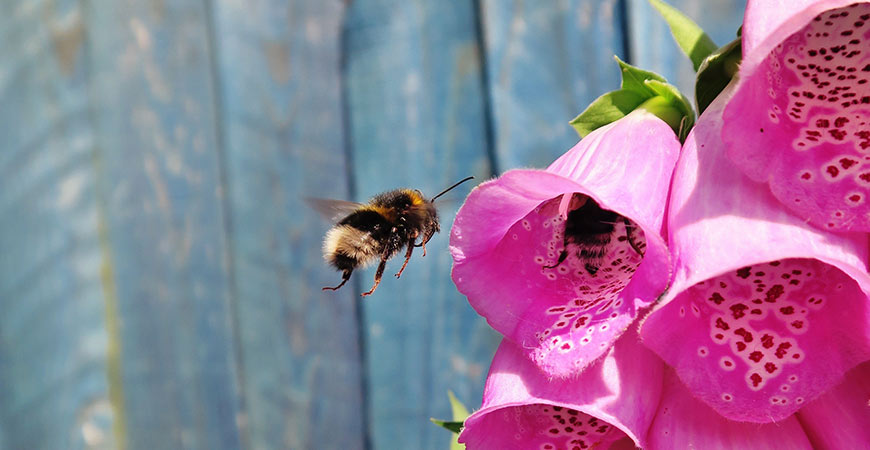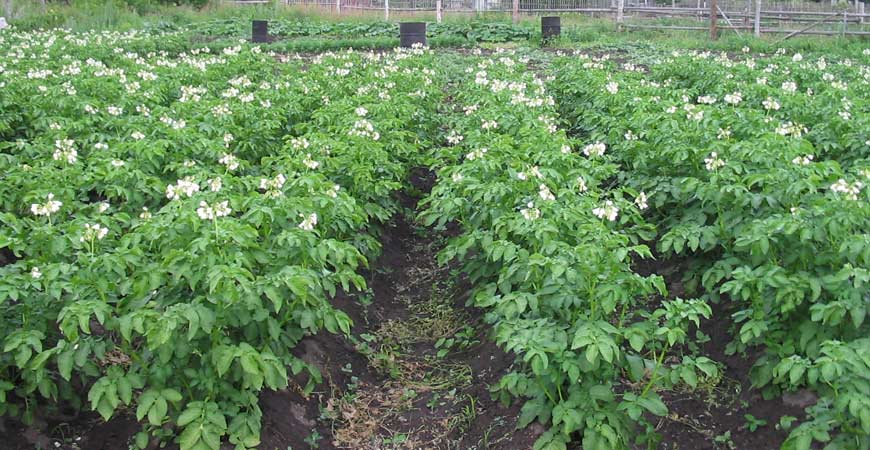
3 Delicious New Additions to Beef up Your Vegetable Garden This Year
Planting a vegetable garden is an excellent way to save money on your grocery bill and enjoy fresh, pesticide-free produce. Best of all, research shows that kids who help with vegetable gardening eat more vegetables.
This can even put them on the road to developing a lifetime of healthy eating habits. While delicious, versatile tomatoes are American gardeners’ number-one veggie choice, there’s no reason to limit yourself to just tomatoes.
Why not spice things up a bit? Here are 3 tasty options to add to your vegetable garden this year.
Potatoes, horseradish and asparagus are all flavorful options for adding variety to your vegetable garden. Here are the “whys” and the “hows” for these 3 tasty crops.
Why Grow Potatoes?
Potatoes are something that most of us just pick up at the grocery store without thinking much about it. But, like garlic, potatoes come in many more varieties than the limited choices available in the produce section.
Potatoes come in many sizes, textures and colors, including deep blue! And freshly harvested potatoes have a quality of flavor and texture you just won’t find at the supermarket, where potatoes are chosen more for how they hold up during shipping and storage than for their flavor.
Growing your own potatoes is also the best way to minimize the potentially unhealthy chemicals used on the potatoes your family eats. Non-organic commercially-grown potatoes are exposed to a large amount of pesticide and fungicide.
Because potatoes are a staple food that many families eat every day, they are a good place to start if you want to decrease the chemicals in your family’s food.
How to Grow Potatoes
If you’re concerned about pesticides and fungicides, be sure to order your seed potatoes from an organic grower, because seed potatoes are often treated with chemicals before they are shipped.
Don’t plant potatoes that you’ve bought at the grocery store, because they have probably been treated with a chemical that discourages eyes from sprouting, and will interfere with their growth in your garden.
Potatoes grow best in USDA hardiness zones 1 through 7. They can even be grown as a winter crop in some warmer climates.
If you live in hardiness zones 1 through 7, plant potatoes 0 to 2 weeks after the last spring frost. You can plant whole potatoes or cut potatoes into smaller pieces with at least 2 eyes apiece before planting.
If you want to cut potatoes up for planting, do so 2 days before you plant them; this allows the potatoes to form a protective coating on the cut areas.
Plant in acidic soil (pH between 5 and 6) with plenty of organic matter, where the plants will get plenty of sun. Dig trenches that are 4 to 6 inches deep, with a foot or so between trenches.
Mix some compost in with the soil in the bottom of the trenches. Plant the potatoes a foot apart from each other, eye-side up, and cover with soil.
Water the plants regularly. Once the plants reach about 6 inches in height, start hilling soil around the plants every 2 weeks or so to support the plants and protect the roots. Most potatoes are ready for harvest in early July; make sure you harvest all of your potatoes before the vines die completely, to avoid rot.
Rotate crops yearly to minimize pests and disease. If you’d like to try a less conventional way to grow potatoes, check out this article that gives you the pros and cons of 7 different planting methods
Why Grow Horseradish?
Fresh horseradish has a more layered flavor and packs a bigger punch than the processed horseradish products you get in the store, which is why homegrown horseradish will make your dressings and sauces excellent, instead of merely good.
It is also a very easy-to-grow plant (see photo) that is hardy all the way down to USDA hardiness zone 3, which includes chilly areas such as northern Minnesota, North Dakota and the northern reaches of Maine.
Horseradish is one of those plants, such as garlic, that thrive much better in regions where the winter gets cold enough to send the plant into a dormant period, so this is probably not the best choice if you live in an area where the ground never freezes.
Horseradish is not picky about soil type, isn’t prone to many diseases or pests, and needs very little care. This means that you’ll get to spend much more time enjoying the fruits of your labor than you will laboring in your garden. Who doesn’t like that in a plant?
How to Grow Horseradish
Plant horseradish root cuttings in a sunny area in the spring or fall. Cut off the top half of the root for immediate cooking use.
Then plant the bottom portion in loose soil at a 45-degree angle, with the top part about 2 inches below the top of the soil. Because a little horseradish goes a long way, one horseradish plant should be enough.
If you want additional plants, space them about 30 inches apart from one another. Water your horseradish about once a week if the weather is dry.
Why Grow Asparagus?
Asparagus squeezes a lot of nutrition into a slender package–it’s loaded with iron, B vitamins, calcium and vitamin C. Fresh asparagus is much more tender and flavorful than the asparagus you’d pay such a pretty penny for in the produce section of your grocery store.
It also bears no resemblance at all to the soggy canned stuff. Fresh asparagus forms a delicious part of many dishes. It also is also excellent on its own with very little dressing up needed.
Wet & Forget team member Melissa and her family absolutely love this lemony asparagus soup, which is not only yummy, but very healthy. Melissa makes large batches of the soup and freezes it in individual plastic bowls, so anyone who wants some soup only has to pop the frozen soup into a sauce pan and heat it up.
Asparagus is also one of the first fresh veggies ready for harvesting each year, and a big reason many home gardeners look forward to spring. And, if you plant it well, asparagus will continue to grow in the same spot for 20 years or more, with only one planting!
You can’t beat that for work vs. reward. Asparagus is hardy in cool climates, and will thrive in almost any part of the country except for hot, damp areas such as the gulf coast.
How to Grow Asparagus
Pick a nice, sunny spot for your asparagus bed, preferably with light, well-drained soil. Choose your spot well, since your asparagus will live there for many years.
Remove all weeds and their roots from a 4-foot-wide bed. Mix plenty of compost or aged manure in with the soil.
If you’re looking for the biggest harvest you can get, choose an “all-male” variety of asparagus. This will produce more edible plants.
Buy 1-year-old asparagus crowns from a nursery, and plant them immediately. Soak the crowns in “compost tea” for 20 minutes just before planting, to encourage growth.
Dig a 12-inch-wide, 6-inch-deep trench down the center of the bed you’ve prepared. Next, place the crowns in the trench about 2 inches apart from another.
Then, loosely cover them with 2 or 3 inches of soil. Wait 2 weeks, and add another inch or 2 of soil on top; do this until the soil over the asparagus is slightly higher than the soil in the rest of the bed. Cover the bed with mulch, and keep the bed well weeded.
Water regularly for the first 2 years, while the asparagus becomes well-established. Fertilize in the spring and fall. Leave the dead foliage in the bed during the winter to protect the roots from the cold.
Then, remove it in the spring just before new sprouts appear. You can save money by starting your asparagus from seed if you don’t mind some extra work and a longer wait before your first harvest.
Try one or all of these delicious gardening additions this year, and spice up your vegetable garden. Happy gardening!
Photos By Pauk, Philip Halling



